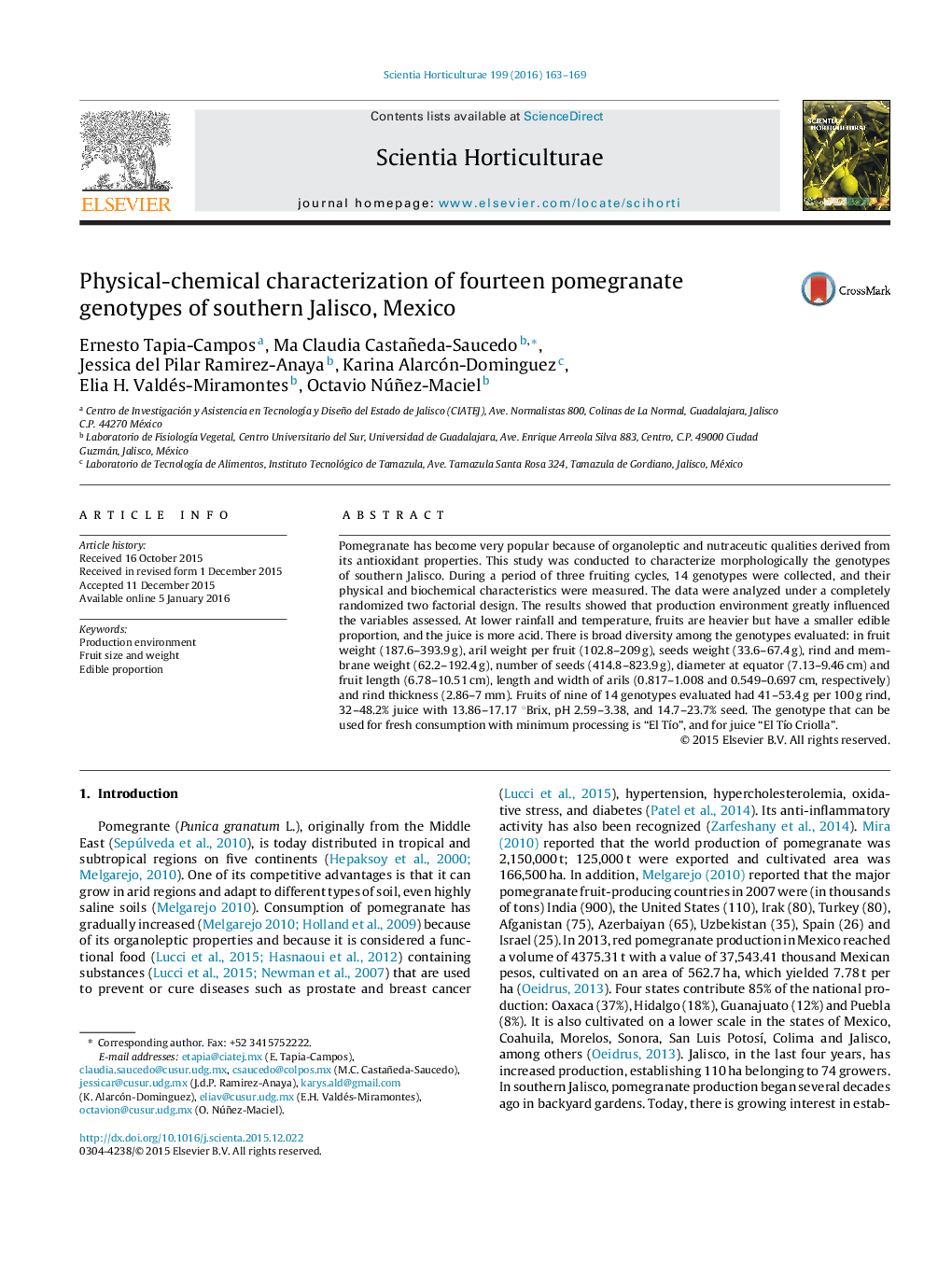| Article ID | Journal | Published Year | Pages | File Type |
|---|---|---|---|---|
| 4566127 | Scientia Horticulturae | 2016 | 7 Pages |
•There is broad diversity in morphometric and biochemical characteristics among 14 genotypes of pomegranate fruits of southern Jalisco.•Not all the morphometric and biochemical characteristics of pomegranate fruits are influenced by the production environment.•At lower rainfall and temperature, pomegranate fruits from genotypes of southern Jalisco are heavier but have smaller edible proportion and a more acid juice.•The outstanding genotypes of pomegranate for their characteristics that favor fresh consumption and extraction of juice are El Tio and El Tio criolla respectively.•The variation found is important from a regional viewpoint since many genotypes have been selected for production of regional products such as punch.
Pomegranate has become very popular because of organoleptic and nutraceutic qualities derived from its antioxidant properties. This study was conducted to characterize morphologically the genotypes of southern Jalisco. During a period of three fruiting cycles, 14 genotypes were collected, and their physical and biochemical characteristics were measured. The data were analyzed under a completely randomized two factorial design. The results showed that production environment greatly influenced the variables assessed. At lower rainfall and temperature, fruits are heavier but have a smaller edible proportion, and the juice is more acid. There is broad diversity among the genotypes evaluated: in fruit weight (187.6–393.9 g), aril weight per fruit (102.8–209 g), seeds weight (33.6–67.4 g), rind and membrane weight (62.2–192.4 g), number of seeds (414.8–823.9 g), diameter at equator (7.13–9.46 cm) and fruit length (6.78–10.51 cm), length and width of arils (0.817–1.008 and 0.549–0.697 cm, respectively) and rind thickness (2.86–7 mm). Fruits of nine of 14 genotypes evaluated had 41–53.4 g per 100 g rind, 32–48.2% juice with 13.86–17.17 °Brix, pH 2.59–3.38, and 14.7–23.7% seed. The genotype that can be used for fresh consumption with minimum processing is “El Tío”, and for juice “El Tío Criolla”.
